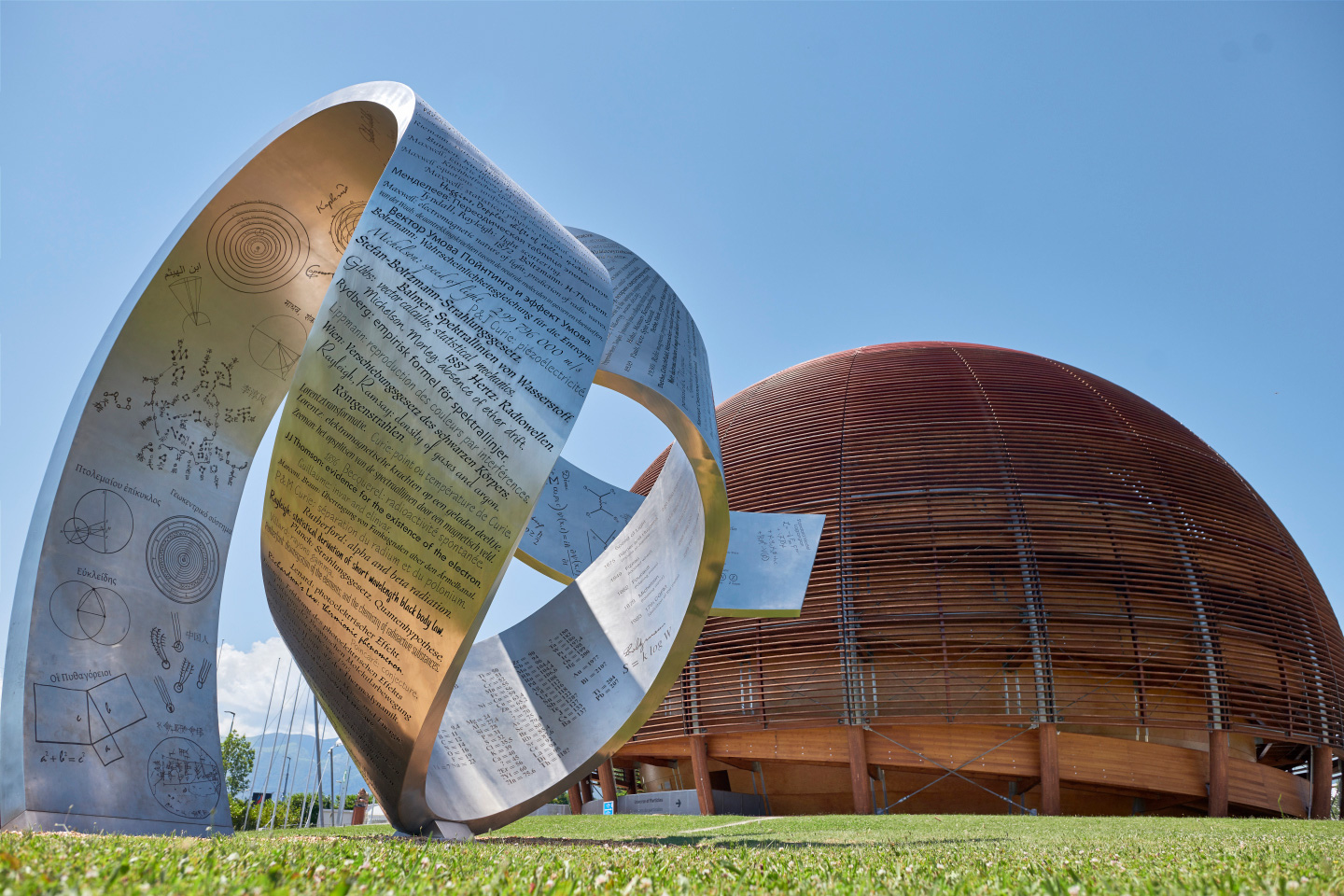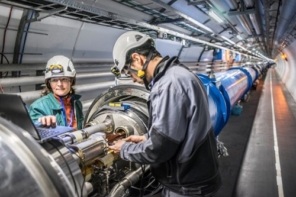

Europe’s foremost particle-physics laboratory, CERN was established near Geneva in 1954 to stop the brain drain to the US that had begun during the Second World War, and to provide a force for unity in post-war Europe. Alongside technological innovations such as the World Wide Web, its contributions to fundamental science include the discovery of the W and Z bosons, the determination of the number of light neutrino families and the discovery of direct CP violation. CERN’s Large Hadron Collider – the highest energy machine in the world – is in the middle of a programme of exploration that has already yielded the discovery of the Higgs boson.
Contact: cern.courier@cern.ch

 Read article 'Welcome to the Science Gateway'
Read article 'Welcome to the Science Gateway'
On 8 April, CERN unveiled plans for a major new facility for scientific education and outreach.
 Read article 'Assessing CERN’s impact on careers'
Read article 'Assessing CERN’s impact on careers'
Results from a new survey show the impact of working at CERN on an individual’s career.
 Read article 'Fixed target, striking physics'
Read article 'Fixed target, striking physics'
A strong tradition of innovation and ingenuity shows that, for CERN’s North Area, life really does begin at 40.
 Read article 'CERN’s ultimate act of openness'
Read article 'CERN’s ultimate act of openness'
The seed that led CERN to relinquish ownership of the web in 1993 was planted when the Organization formally came into being.
 Read article 'The tale of a billion-trillion protons'
Read article 'The tale of a billion-trillion protons'
Linac2, the machine that feeds CERN’s accelerator complex with protons, has entered a well-deserved retirement after 40 years of service.
 Read article 'CERN thinks bigger'
Read article 'CERN thinks bigger'
The Future Circular Collider study would see a 100 km-circumference tunnel built at CERN to host post-LHC colliders.
 Read about 'Find out more about jobs at CERN'
Read about 'Find out more about jobs at CERN'
Explore CERN’s employer profile and see the latest vacancies
 Read article 'Accelerator sustainability in focus'
Read article 'Accelerator sustainability in focus'
A workshop on sustainability for future accelerators took place on 25–27 September in Morioka, Japan.
 Read article 'Bruce Marsh 1980–2023'
Read article 'Bruce Marsh 1980–2023'
A recognised international leader in laser technologies for radioactive ion-beam production.
 Read article 'Probing resonant production of Higgs bosons'
Read article 'Probing resonant production of Higgs bosons'
No known particle is heavy enough to decay into two Higgs bosons. The resonant production of Higgs pairs would therefore be clear evidence for new physics.
 Read article 'New pentaquark searches in beauty decays'
Read article 'New pentaquark searches in beauty decays'
A new analysis by LHCb of the open-charm hadrons in Λb decays was presented at the International Conference on Meson-Nucleon Physics and the Structure of the Nucleon
 Read article 'Advances in cosmology'
Read article 'Advances in cosmology'
The papers assembled in this volume range in subject matter from dark-matter searches and gravitational waves to artistic and philosophical considerations.
 Read article 'Tango for two: LHCb and theory'
Read article 'Tango for two: LHCb and theory'
The 13th Implications of LHCb measurements and future prospects workshop showcased mutual enthusiasm between the experimental and theoretical communities
 Read article 'Education and outreach in particle physics'
Read article 'Education and outreach in particle physics'
A celebration of the opening of CERN Science Gateway, a new flagship centre for science education and outreach.
 Read article 'A global forum for high-energy physics'
Read article 'A global forum for high-energy physics'
The directors of KEK, CERN, Fermilab and IHEP discussed a future global strategy at the 13th ICFA seminar.
 Read article 'Physics community pays tribute to Peter Higgs'
Read article 'Physics community pays tribute to Peter Higgs'
An iconic figure in modern science, Higgs in 1964 postulated the existence of the eponymous Higgs boson.
 Read article 'Balancing matter and antimatter in Pb–Pb collisions'
Read article 'Balancing matter and antimatter in Pb–Pb collisions'
The ALICE collaboration has placed stringent limits on models describing baryon-number transport effects.
 Read article 'Iodine vapours impact climate modelling'
Read article 'Iodine vapours impact climate modelling'
Climate models are missing an important source of aerosol particles in polar and marine regions, according to new results from the CLOUD experiment at CERN.
 Read article 'The promise of laser-cooled positronium'
Read article 'The promise of laser-cooled positronium'
In demonstrating laser cooling of a purely leptonic matter-antimatter system, the AEgIS collaboration opens new possibilities for antimatter research.